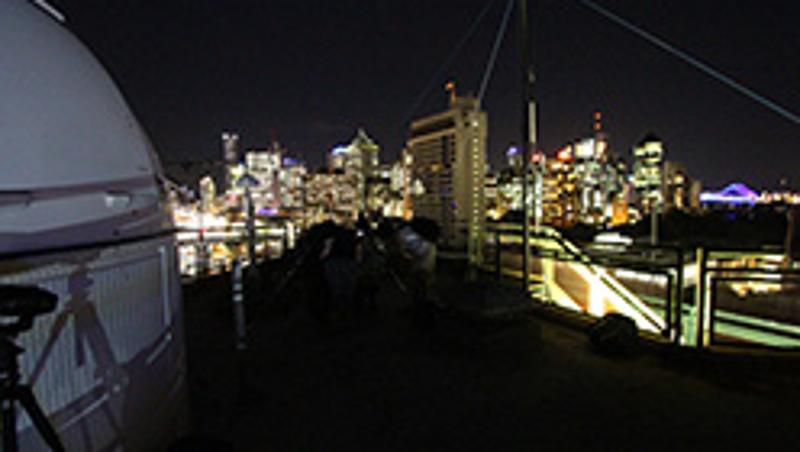
April starts a star-gazing bonanza that promises to have astronomers feeling like they have hit the celestial jackpot with a series of rare astronomical events.
QUT astrophysicist Dr Stephen Hughes said the tetrad - or first of four consecutive total lunar eclipses or "blood moons" over the next two years - would begin on Tuesday (April 15). The next will occur October 8, and in 2015 on April 4 and September 28.
"They are known as blood moons because when the Moon passes through the shadow of the Earth rather than fade into oblivion, it has an eerie red glow," Dr Hughes, from QUT's Science and Engineering Faculty, said.
"In fact the Moon may look particularly red from Brisbane because the Moon will be low on the horizon, where there will be the additional effect of the atmosphere - the same effect that causes red sunsets."
Dr Hughes said the lunar eclipse would start with the moonrise just before 5.30pm in Brisbane about 10 degrees south of east, or from Brisbane city looking towards the Kangaroo Point cliffs.
"It will be fully eclipsed until about 6.15pm when the rim will start to brighten on the right hand side. The Moon will be fully uncovered by about 7.30pm," he said.
Dr Hughes said the tetrad had happened only three times in the past 500 years.
"The first occurred in 1493, the second in 1949 and third in 1967," he said.
But it is not just this month's blood moon that will have starwatchers looking up, Dr Hughes said.
"On Monday April 14, Mars will pass the Earth at a distance of 92 million kilometers, the closest point to the Earth for 26 months," he said.
"Although Mars will be very close to the Earth in astronomical terms, and look larger than usual, if there was a highway between Earth and Mars it would take more than a century to drive there travelling at 100km/h."
To cap of the month, on April 29 there will be a partial eclipse of the Sun which will be visible during sunset in Brisbane.
"Although partial eclipses of the Sun are nowhere near as spectacular as total solar eclipses, in this case, because the eclipse will occur close to the horizon, it will make it a more spectacular eclipse than if it were higher in the sky," he said.
"That is because both the Sun and the Moon appear bigger when close to the horizon - a phenomenon known as the Moon Illusion."
Why is the moon red?
"To better understand how this occurs, in our imagination we need to travel to the moon during a total lunar eclipse," Dr Hughes said.
"If we were standing on the lunar surface, the Earth would be high in the sky. The Earth would look about three-and-a-half times larger than the moon does from Earth.
"In the middle of the eclipse the Earth would completely cover the Sun and very little solar atmosphere, the corona, would be seen. However, we would see a bright orange ring around the dark Earth.
"We might also be able to see a faint blue haze above the orange. This orange ring would be due to all the sunsets and sunrises occurring at the edge of the Earth."
To get a visual perspective, graphic artist David Sawell has generated the 'ring of fire' by using the colours from a photo taken from the International Space Station.
Mr Sawell said the thickness of the ring was then adjusted to be the same as the thickness of the atmosphere and then inserted into a photo taken from the surface of the Moon against the backdrop of the Milky Way.
"The idea was to create an accurate image of what it would be like to walk on the Moon during a total lunar eclipse," Mr Sawell said.
The 'red moon' image will be on an interactive display along with other space images at the QUT Cube on Tuesday night April 15 between 5pm-8pm. Visitors are welcome.
Dr Stephen Hughes will also hold a practical lecture with students at QUT's observatory at Gardens Point campus on Tuesday night.
Media contact:
Sandra Hutchinson, QUT Media (Tue, Wed, Fri), 07 3138 9449 or media@qut.edu.au
After hours, Rose Trapnell, 0407 585 901




